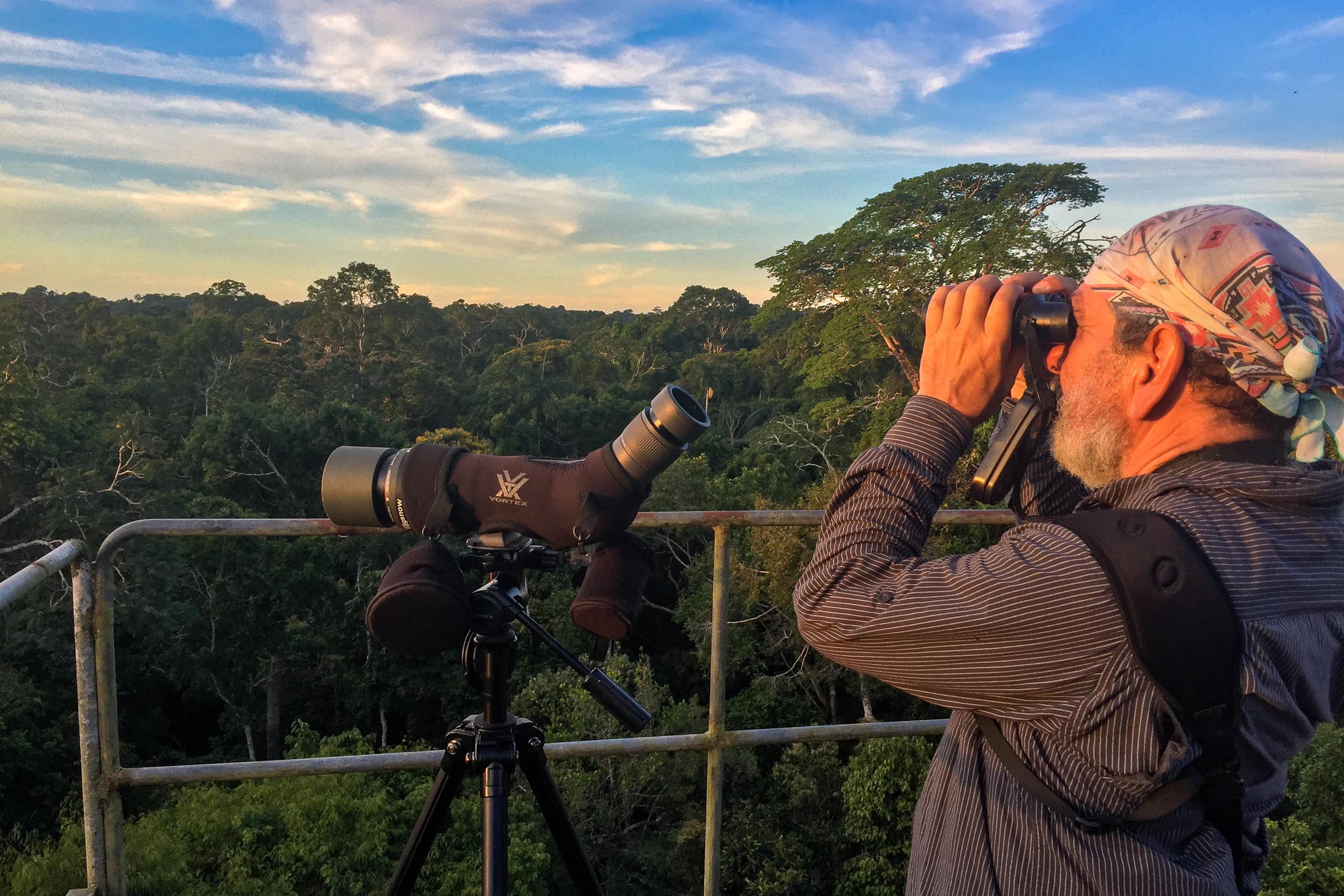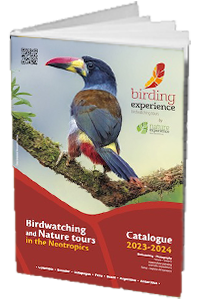Your travel expert
Xavier Amigo
Responsible for naturalist, botanical and ornithological travel. Responsible of fixing and professional contact.

Located just a few wingbeats northwest of the Ecuadorian capital, the Andean Chocó, recently promoted to Biosphere Reserve status by UNESCO, has become one of the most emblematic bioregions in the tropical Andes. About 850 species of birds are concentrated here, 62 of which are endemic. From the other side of the high Andes, the road enters the Amazon basin, crossing many different types of forest and ending up on the northern banks of the Napo River, the gateway to the Amazon, where some 700 different species of birds await you. For the avid bird photographer, this 16-day tour, ranging from 350 to 3900 meters in altitude, will be an absolute delight in terms of diversity and photographic opportunity. The route is easy to access, dotted with pleasant and diverse reserves and lodges, and has a wide variety of hummingbird gardens, feeding areas, and observation towers. It’s a tour designed by photographers, for photographers. On the program: toucans, hummingbirds, fruiteaters, motmots, tanagers, trogons and quetzals. It is a must for any birding photography trip in Ecuador.

Upon arrival at Quito International Airport (2800 masl), your guide will welcome you and brief you about the upcoming trip.
Immediate transfer to your hotel close to the airport and check-in. Depending on the arrival time, we can stroll around the hotel and make our first observations of typical species of the inter-Andean valley.
Key species: Sparkling Violetear, Black-tailed Trainbearer, Giant Hummingbird, Wester Emerald, Great Thrush, Saffron Finch, Scrub Tanager, Blue and yellow Tanager
Early departure from our hotel to the Chocó mountain region. The descent by jeep along the western foothills of the Andes will immerse us in the Andean forest ecosystem. Arrival at the entrance of the Tandayapa Valley, where we will visit the small Alambi River bird reserve (1550 meters). This first stop will allow for easy birding and photography around the many hummingbird feeders. We’ll eat lunch in front of the hummingbird feeders, and in the afternoon, head towards our lodge located a little higher up in the Tandayapa Valley (2200 meters) in an area of cloud forest. After settling into our rooms, we will have the opportunity to see new species of hummingbirds around the feeders.
Key species: Golden-headed Quetzal, White-capped Dipper, Black-eared Hemispingus, Streaked Tuftedcheek, Black-chinned Mountain-Tanager, White-throated Quail-Dove, Rufous Motmot, Streak-capped Treehunter, Strong-billed Woodcreeper, Zeledon’s Antbird, Uniform Antshrike, Chestnut-capped Brush-Finch, Russet-crowned Warbler
This primary forest in the middle of the Chocó mountain range will allow us to explore the biogeographic altitudinal stage of the subtropical rainforest, otherwise known as the "cloud forest.” Here, at an altitude of 2100 masl, we are in the midst of one of the richest ecosystems on the planet. We will spend the day walking on the reserve's trails for understorey species. The wider track edges will also allow us to observe more easily and try to understand the phenomenon of mixed flocks. Finally, the hummingbird feeders will give us time to relax while continuing our observations in this comfortable lodge. If we are lucky, we will have the opportunity to observe some of the endemic birds of the mythical Chocó mountain area. Then, we will descend to the lower Tandayapa Valley to our next accommodation.
Key species: Booted Racket-tail, Violet-tailed Sylph, Collared Inca, Turquoise Jay, Golden-headed Quetzal, Toucan Barbet, Tyrannine Woodcreeper, Spilmann’s Tapaculo, Green-and-black Fruiteater, Blue-winged Mountain-Tanager, Hooded Mountain-Tanager, Grass-green Tanager, Plushcap, Tanager Finch
Early breakfast, then descent to the Paz de las Aves reserve. We walk down to the Cock-of-the-Rock (Rupicola peruviana sanguinolenta) arena, where we can photograph the courtship of this unusual Cotinga. Angel, the owner of the reserve, will accompany us along the trails to look for three species of antpitta: the Giant, the Yellow-breasted, and the Moustached. These extremely shy undergrowth birds can be approached here without difficulty. Lunch and departure to Milpe, our next reserve. Here, we will take advantage of the various trails that crisscross this magnificent forest, where you can visit several leks of different species of manakins and witness the abundant mixed flocks near the various hummingbird feeders and fruit feeders around midday.
Key species AM: Andean Cock of the Rock, Giant Antpitta, Yellow-breasted Antpitta, Ochre-breasted Antpitta, Flame-faced Tanager, Black-capped Tanager, Black-chinned Mountain-Tanager.
Key species PM: Bronze-winged Parrot, Green Thorntail, Rufous Motmot, Red-headed Barbet, Choco Toucan, Pale-mandibled Araçari, Immaculate Antbird, Club-winged Manakin, Choco Warbler, Western Woodhaunter, Rufous-throated Tanager
Today, we will reach one of the latest popular sites in Ecuadorian birding. The Mashpi Mixed Protection Area (MPA) is a collection of conservation initiatives isolated from the main roads and still covered with original vegetation. This site is, therefore, simply incredible for ornithology as it has surprising climatic characteristics for the region, with a humidity level reminiscent of the lowland forests of Chocó. At the same time, the area is around 1400 meters above sea level. Located at the crossroads of the biogeographical influences of the lowland Chocó and the mountainous Chocó, the reserve is home to several species of different altitudes. During the day, we will go birding with the owner of Amagusa Reserve to try to find most of the key species in the area.
Key species: Wedge-billed Hummingbird, Pacific Tuftedcheek, Scaled Fruiteater, Orange-breasted Fruiteater, Long-wattled Umbrellabird, Rufous-brown Solitaire, Black Solitaire, Indigo Flowerpiercer, Moss-backed Tanager, Choco Vireo
In the early morning, we will head to the two hides built near the lodge to wait patiently for the arrival of some shy understorey species. After breakfast, we leave mid-morning for Santa Rosa. Located at 1850 meters above sea level, this small reserve, run by a bird photographer, offers great opportunities to photograph many normally rare species in complete tranquillity. There is no shortage of activity here, from hummingbird feeders to tanagers and toucans. In the late afternoon, we continue our journey to the inter-Andean valley, which we will cross to reach the Antisana reserve, where we will spend the night.
Key species: Plate-billed Mountain-Toucan, Metallic-green Tanager, Toucan Barbet, Ecuadorian Thrush, Flame-faced Tanager, Black-capped Tanager, Golden-naped Tanager, Black-chinned Mountain-Tanager, Golden Tanager, Flame-rumped Tanager, Hoary Puffleg, Tooth-billed Hummingbird, Crimson-rumped Toucanet, Sickle-winged Guan, Grey-breasted WoodWren, Slaty-backed Nightingale-thrush
After an early breakfast, we will take the short road to the Antisana Ecological Reserve. From a platform, we will scan the nesting walls of the Condor, one of the most important populations in the country, with a telescope. We will then explore the grasslands and scrub vegetation of the highlands, looking for hummingbirds and high-Andean passerines, and then climb to the expanses of the Andean steppe called the páramo. Diversity at this altitude (almost 4000 masl) is low, but the species visible here are all adapted to this particular ecosystem. A short walk along La Mica lagoon will allow us to observe some aquatic birds. In the early afternoon, we'll return to the lower areas to have lunch around hummingbird feeders and to try to observe one of the rarest mammals of this ecosystem: the Spectacled Bear. Arrive in Papallacta before evening, where you can relax in the hot thermal spa.
Key species: Andean Condor, Black-chested Buzzard Eagle, Variable Hawk, Aplomado Falcon, Ecuadorian Hillstar, Andean Tit Spinetail, Tawny Antpitta, Andean Teal, Andean Ruddy Duck, Andean Lapwing, Andean Ibis
This morning, we will have the choice between enjoying the Papallacta thermal spa and exploring the super humid Páramo areas of the Cayambe Coca reserve. From the Papallacta Pass at an altitude of over 4000 meters, we will search for Ecuador's main highland species in a mosaic of ecosystems: temperate forest, super humid páramo, lagoons, elfin scrub and Polylepis woodland. If the weather is good, we will climb up to the antennas at an altitude of more than 4300 meters in search of the most specialized species. We descend to the small reserve of Guango for lunch. In the late afternoon, we continue our descent along the eastern foothills. We will cross a wide altitudinal gradient between elfin, high-Andean, and cloud forests to reach our next lodge, where we will spend two nights.
Key species (Papallacta): Andean Guan, Blue-mantled Thornbill, Viridian Metaltail, Stout-billed Cinclodes, Many-striped Canastero, Giant Conebill, White-throated Tyrannulet, Rufous-bellied Seedsnipe, Red-crested Cotinga, Andean Condor, Black-backed Bush Tanager
These high-altitude tropical forests are called Cloud Forests because of the magical fog that covers them for part of the day. This almost constant humidity allows the development of vegetation rich in epiphytes, mosses, orchids, bromeliads, cacti, etc. But also frogs, birds, and small mammals. In the afternoon, we will visit the scientific station of Yanayacu, where scientists have developed several research projects on the reproductive biology of Ecuadorian birds and a project to study the parasites of several particularly attractive species of caterpillars. One of the station’s scientists will present all these projects in more detail. After dinner, we will try to observe an owl (Choliba sp.) which might be a new species for science.
Key species: Black-and-chestnut Hawk Eagle, San Isidro owl, Chestnut-breasted Coronet, Crested Quetzal, White-bellied Antpitta, Powerful Woodpecker, Emerald Toucanet, Bicolored Antvireo, Peruvian Antpitta, Sulphur-bellied Tyrannulet, White-capped Tanager
At first light, we will go to the lowland lodge to observe and photograph some additional species. We will stay there most of the morning before taking a moment around the hummingbird feeders. Then, it is time to take our long drive to the eastern foothills of the Cordillera to the eastern part of the Antisana Reserve, along the Ara Cordillera, where we make a short stop. The trail that runs along the heights of the Guacamayo mountain range takes advantage of the ridge effect, winding its way between subtropical and foothill forests on the eastern side of the Andes. We will explore its dense and humid vegetation for a while before descending to the upper Amazon foothills to our next lodge in the buffer zone of Sumaco National Park, in the middle of the subtropical Amazonian forest (1500 meters).
Key species: Berlepsch’s Tinamou, Grey-lined Hawk, Purple Quail-dove, Tooth-billed Hummingbird, One colored Becard, Bicolored Antbird, Ruddy Foliage-gleaner, Bay Wren, Scaly-breasted Wren, Emerald Tanager
WildSumaco is one of those isolated reserves, which, although little known to the general public, is extremely rich in birdlife. The conservation and research projects there have documented many species that are normally rare and difficult to observe. Its accommodation infrastructure and numerous trails let us access an ecosystem that has long been isolated, as it is wedged between the Amazon foothills and the high Andes. Therefore, we will explore these two very different habitats over the next two days. We will explore roadsides, subtropical rainforest trails, and forest creeks and also spend some time around the feeder areas and on the viewing platforms in front of the Lodge.
Key species: Short-tailed Antthrush, Ecuadorian Piedtail, Golden-tailed Sapphire, Gould’s Jewelfront, Plain-backed Antpitta, Striolated Puffbird, Black-mandibled Toucan, Chestnut-crowned Gnateater, Buff-throated Tody-Tyrant
It will be time to continue our descent into the lower parts of the Ecuadorian Amazon basin to the town of Coca (Francisco de Orellana), located on the Napo River (350 masl) in Napo province. From the docks on the Napo River, Ecuador's largest tributary of the Amazon, we will board our motorized dugout canoe for a descent of about three hours, our first immersion into the lowland Amazon. After arriving at the edge of Yasuni National Park in the territory of the Sani community, we will transfer to smaller dugout canoes and then row along the black water canals to the lagoon where the lodge sits (250 masl). After settling into our spacious cabins, our guide will give us a presentation of the site and a briefing on the upcoming trip. This day is essentially a travel day, but along the Napo River (riparian and "white water" ecosystem), along the narrow “black water” channels, and around the lagoon, we will have the opportunity to observe our first Amazonian species.
After an early and hearty breakfast, we will go by rowing boat and then by motorboat to the banks of the Napo River. From there, we will visit two "clay licks": clay cliffs covered with minerals visited by several parrot species to facilitate their digestion (diet composed almost exclusively of acidic fruits and vegetables). The first clay lick is located directly on an open bank of the Napo River; the second is inside the forest and is more like a cave. It attracts very different species from the first. After this incredible sight, we will take a trail in Terra Firme close to the second clay lick in search of the characteristic species of this flooded ecosystem. After lunch, we will take a motorboat ride along the Napo River to look for some interesting "white water" riparian species (named after the light brown color of the great Amazonian rivers that carry silt and material from the high Andes where they originate). At the end of the day, we will return to our lodge via the "black water" canals, so called because of their dark tea color (due to the tannins in the decomposing leaves washed by the Amazonian rains and accumulating in the rivers and lagoons).
Note: The activities of these two days will vary according to the climate.
After crossing the lagoon, a 20-minute walk will take us to the observation tower. Built on the sides of a Kapok tree, this 35-meter-high observation tower will allow us to have an unobstructed view of the Amazonian forest canopy. The canopy birds, often much higher than 30 meters, are among the most difficult to observe in the Amazon. The construction of such towers makes our task much easier. In the middle of the morning, we descend to the ground level for a long observational walk in the forest of a seasonally flooded ecosystem: the Varzea. This is home to a significantly different avifauna than the Terra Firme and promises us some new species. After a well-deserved rest at the lodge, we set off again at the end of the afternoon on another trail. This one winds between Varzea and Terra Firme and will allow us to observe many species. After dinner, we will go on a torchlight trip in a rowing boat, searching for many nocturnal species and the rare black caiman.
Note: The activities on these two days will vary according to the weather.
This morning, we will visit one of the Amazon’s most specialized and interesting ecosystems. The islands on the large Amazonian rivers represent small independent ecosystems that have evolved entirely autonomously. Depending on their age, height, and stage of vegetation, these islands are home to a contingent of very different and specialized species. This morning, we will travel along the Napo River to several islands of various ages, structures, and vegetation cover in search of all these specialist species. After that, we will return to the lodge during the heat of the day. In the afternoon, we will coordinate our final outing with our guide depending on what we want to rediscover: observations at the end of the day from the canopy tower, the Terra Firme trail, the Varzea trail, a canoe ride along the lagoon's shores and the "black water" channels. After dinner, we will take a final walk along one of the trails in search of nocturnal birdlife.
Early in the morning, we take our rowing boats back to the canals, leading us to the Napo River. At the border of the National Park, our motorized dugout will be waiting for us to go up the Napo River, where we can enjoy our last observations. We arrive in the city of Coca around noon for our flight to Quito airport.
End of our services.
Key species: (you will find here the most representative species. The list would be too long, but we will send it to you later) Anhinga, Zigzag Heron, Black Hawk Eagle, Sungrebe, Blue-and-yellow Macaw, Scarlet-shouldered Parrotlet, Black-headed Parrot, Blue-headed Parrot, Hoatzin, Crested Owl, Great Potoo, Amazonian White-tailed Trogon, Violaceous Jay, American Pygmy Kingfisher, Great Jacamar, Gilded Barbet, White-necked Puffbird, White-throated Toucan, Cream-colored Woodpecker, Long-billed Woodcreeper, Point-tailed Palmcreeper, Great Antshrike, Grey Antwren, Yellow-browed Antbird, Black-faced Antbird, White-plumed Antbird, Rufous-capped Antthrush, Rusty-belted Tapaculo, Citron-bellied Attila, Plum-throated Cotinga, Bare-necked Fruitcrow
Departure possible all year round.
You want a personalized departure date? Contact us. Request a personalized date
| Dates | Status | |
|---|---|---|
| From Sep 07 to Sep 22, 2024 | Open to booking (6 places left) | |
| From Oct 16 to Oct 31, 2024 | Open to booking (4 places left) |
| 2 travelers | 4 travelers | 6 travelers |
|---|---|---|
| 6,210 US$ | 5,220 US$ | 4,680 US$ |
You are a group of travelers and want a special rate? Contact us. Request a personalized quote
To book your tour, please confirm your agreement in writing to your travel expert.
The agency declines all responsibility for the execution of the confirmed services in case of non-compliance with the above payment terms.
Itineraries may be subject to last minute changes due to natural disasters or changes in domestic legislation. The visitor must take into account and accept the possibility of last minute changes in the organisation of the trip. The operator therefore reserves the right to make any changes necessary to ensure the safety and integrity of the travellers and to comply with the laws in force. The hotels are given as an indication subject to availability at the time of booking the tour. In case of unavailability, a hotel of the same category will be proposed.
Formalities: passport valid 6 months after your return date. No visa is required at this time. Your health insurance (private or public) is compulsory to enter Ecuador.
Vaccinations: although no vaccinations are compulsory, we advise you to consider those against tetanus, yellow fever and hepatitis A and B as indispensable.
We recommend that you consult your doctor before departure and that you take out insurance to cover medical expenses and repatriation.
Concerning parasitic diseases transmitted by mosquito bites (such as malaria, dengue fever, Chikungunya), please note that Quito and the centre of the country and the Galapagos are not affected. Furthermore, the majority of the country's risk areas are not in the zones we visit during our itineraries.
* In US dollars based on double occupancy (single supplements not included). These rates are valid for the dates selected but may be subject to increase at the time of booking and depending on the tourist season and local holidays. Our quotations are calculated in US Dollars and we are committed to this amount. The equivalent value in Euros or in any other currency is therefore indicative and calculated on the basis of the exchange rate on the day of the offer.
** The values of the flights are given as an indication and are subject to possible change at the time of confirmation of the trip.
*** Some lodges are very small and the availability of single rooms must be confirmed at the time of booking and the rate revised accordingly.
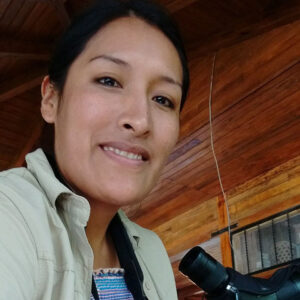


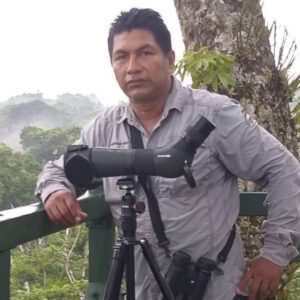


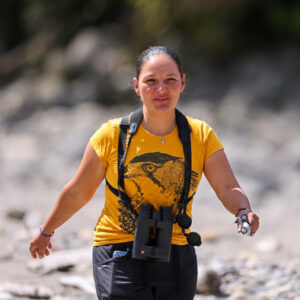


Travel theme |
Birdwatching, nature, and photography |
|---|---|
Accompaniment |
Bilingual specialist guide |
Group |
From 2 to 6 people |
Arrival city |
Quito |
Departure city |
Quito |
Accommodation |
Charming hotels, lodges and haciendas |
Transport |
Private transfers |
Physical condition |
Easy to moderate (some walks at altitude, although slow, can be tiring) |
